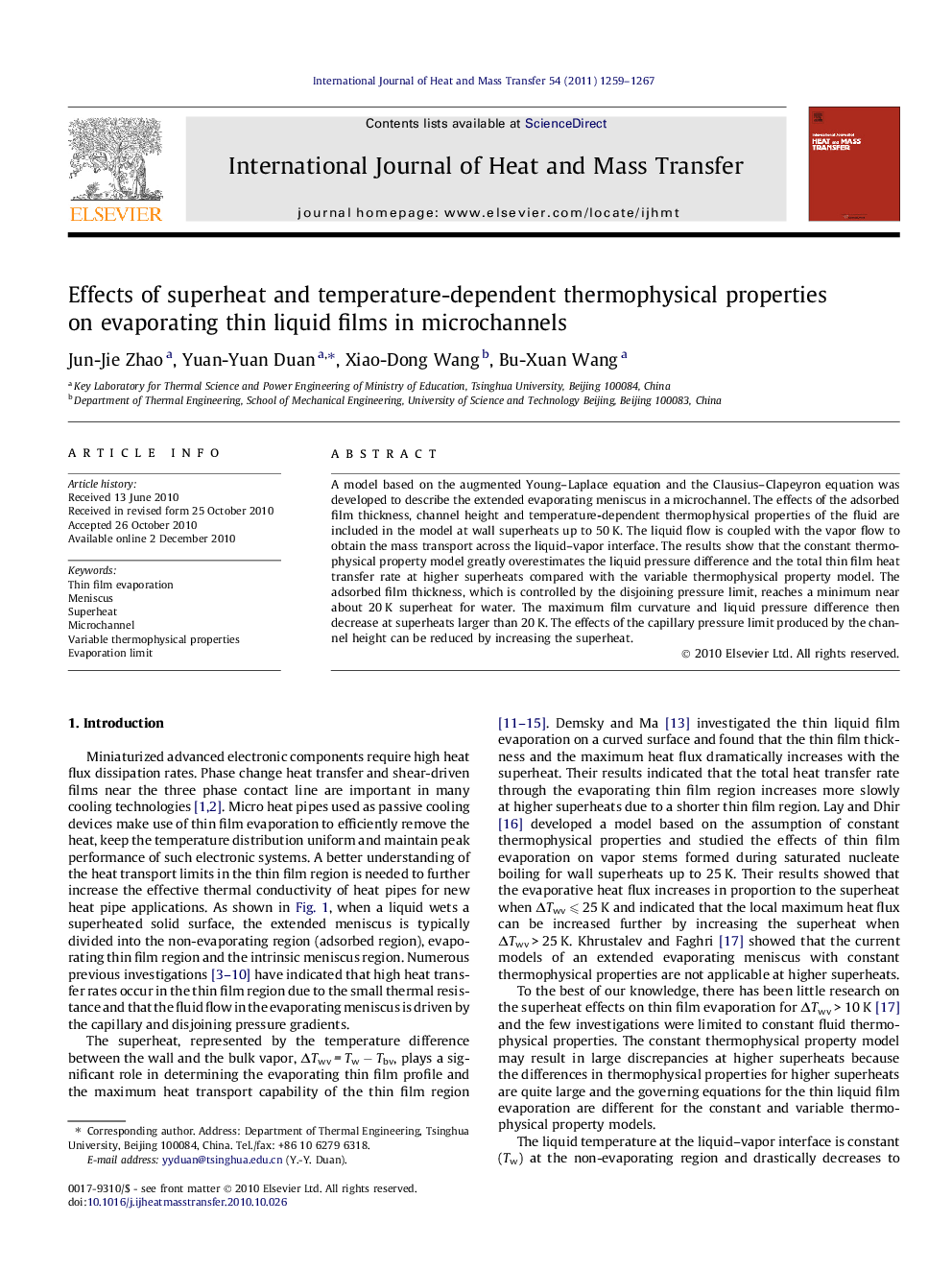| Article ID | Journal | Published Year | Pages | File Type |
|---|---|---|---|---|
| 7059981 | International Journal of Heat and Mass Transfer | 2011 | 9 Pages |
Abstract
A model based on the augmented Young-Laplace equation and the Clausius-Clapeyron equation was developed to describe the extended evaporating meniscus in a microchannel. The effects of the adsorbed film thickness, channel height and temperature-dependent thermophysical properties of the fluid are included in the model at wall superheats up to 50Â K. The liquid flow is coupled with the vapor flow to obtain the mass transport across the liquid-vapor interface. The results show that the constant thermophysical property model greatly overestimates the liquid pressure difference and the total thin film heat transfer rate at higher superheats compared with the variable thermophysical property model. The adsorbed film thickness, which is controlled by the disjoining pressure limit, reaches a minimum near about 20Â K superheat for water. The maximum film curvature and liquid pressure difference then decrease at superheats larger than 20Â K. The effects of the capillary pressure limit produced by the channel height can be reduced by increasing the superheat.
Related Topics
Physical Sciences and Engineering
Chemical Engineering
Fluid Flow and Transfer Processes
Authors
Jun-Jie Zhao, Yuan-Yuan Duan, Xiao-Dong Wang, Bu-Xuan Wang,
